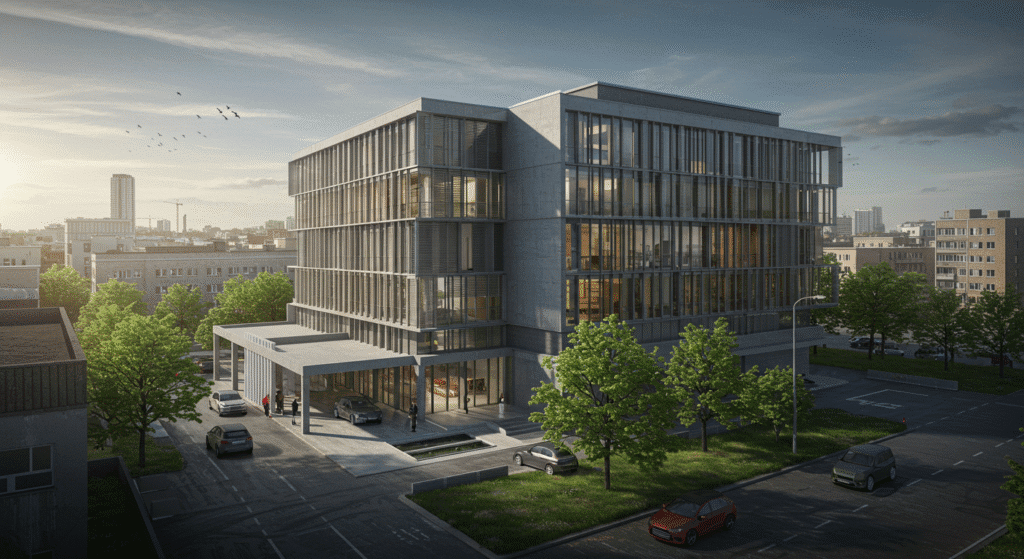Choosing to study architecture is a big commitment, and one of the first questions students and parents often ask is, “How long does it actually take to become an architect in the UK?” Unlike many other degrees, architecture is unique because it blends university study with practical training and professional examinations. A standard degree in architecture will take at least three years at undergraduate level, but if your goal is to become a fully qualified architect, the full journey usually takes around seven years or more. This includes your undergraduate degree, postgraduate study, practical work placements, and the final Part 3 examination. Understanding this timeline is essential because it helps you plan your education, finances, and career goals from the very start. In this guide, we’ll break down the full structure of architecture study in the UK, explain why it takes longer than many other subjects, and explore alternative pathways that could make the journey shorter or more flexible.
Standard Length of an Architecture Degree in the UK

In the UK, the starting point for most students is a three-year undergraduate degree such as a BA or BSc in Architecture. This is sometimes called Part 1 of the professional training stages set by the Architects Registration Board (ARB) and the Royal Institute of British Architects (RIBA). After finishing this degree, most students take a year out to gain professional experience before continuing with a postgraduate qualification, usually a two-year Master of Architecture (MArch), which counts as Part 2. Following this, a further year of supervised practice and the Part 3 exam are needed to register as an architect.
It is important to note that the undergraduate degree alone does not qualify you as an architect. Instead, it provides the foundation knowledge in design, history, technology, and professional practice that is essential for progressing to the next stages. Universities also structure their courses differently, with some offering integrated Master’s degrees that combine undergraduate and postgraduate study, usually lasting five years without a break. This means the degree length can vary slightly depending on the route chosen, but the professional pathway is still designed to take several stages.
Full Timeline to Qualify as an Architect in the UK
The journey to becoming a qualified architect is carefully structured to ensure students develop both academic knowledge and practical skills. Below is the typical year-by-year breakdown:
Stage 1 – Undergraduate Architecture Degree (Years 1–3)
The undergraduate stage builds your understanding of design principles, drawing, model making, digital tools, history of architecture, and building technology. You’ll also start building your first portfolio, which is essential for future applications. This degree must be ARB/RIBA accredited to count towards professional training.
Stage 2 – Year Out of Professional Experience (Year 4)
After graduation, most students spend a year working in an architectural practice. This is referred to as the “year out” and is essential for logging experience through the Professional Experience and Development Record (PEDR).
Stage 3 – MArch or Equivalent (Years 5–6)
The postgraduate course deepens your design and technical knowledge. You’ll work on larger projects, engage in research, and refine your creative approach. The MArch is recognised as Part 2 of your professional training.
Stage 4 – Professional Experience (Year 7)
A second period of practice takes place after the MArch. This stage helps you prepare for your professional exams, with a focus on contracts, regulations, and business aspects of architecture.
Stage 5 – Part 3 Exam and ARB Registration (Year 8)
The final step is the Part 3 exam, which tests your ability to practice independently as an architect. Once passed, you can register with the ARB and use the legally protected title of “Architect.”
| Stage | Years | Description |
| Part 1 | 1–3 | Undergraduate BA/BSc Architecture |
| Work Experience | 4 | Year out in practice (PEDR records) |
| Part 2 | 5–6 | Postgraduate MArch or equivalent |
| Work Experience | 7 | Professional practice placement |
| Part 3 | 8 | Professional exam + ARB registration |
Alternative Pathways and Degree Length Variations

Not every student follows the traditional university route, and in recent years, more flexible pathways have become available. One popular alternative is the Level 7 Architecture Apprenticeship, which allows you to work in practice while studying part-time. This usually takes around 6 years and is often sponsored by employers, reducing the cost of training. Another option is the RIBA Studio, which enables students to study while working full-time in a practice, with course materials and assessments provided by RIBA in partnership with universities.
For international and EU students, the length of study may vary depending on how their qualifications are recognised by the ARB. In some cases, students may need to complete additional conversion courses to meet UK standards. Mature students or those changing careers may also take part-time courses, extending the total number of years needed, but offering greater flexibility.
Why Does an Architecture Degree Take So Long?
Architecture requires a balance of creativity, technical skills, and professional responsibility. Unlike other degrees, which may focus purely on academic study, architecture must prepare students to design safe, sustainable, and functional buildings in line with strict regulations. This is why both academic study and practical training are built into the qualification timeline.
The ARB and RIBA regulate the profession to ensure architects meet high standards before they can practice. This long pathway also reflects the wide range of skills required, from artistic design and critical thinking to structural understanding and legal knowledge. Although it can feel like a lengthy process, the extended training ensures graduates are well prepared for the demands of the profession.
Factors That Affect How Long It Takes to Qualify
Not every student will qualify in exactly 7–8 years. Several factors can influence the total time:
- Full-time vs. part-time study: Part-time degrees take longer but are more flexible.
- Integrated vs. separate courses: Some universities offer combined 5-year programmes.
- Resits or breaks: Taking time off or retaking exams will extend the timeline.
- Career changers: Mature students may already have transferable skills, but part-time routes often add extra years.
This flexibility means you can adjust your pathway to fit your circumstances, but it also makes careful planning important.
Costs and Time Investment of Architecture Training

Since training takes longer than many degrees, the financial investment is also higher. Undergraduate tuition fees in the UK are around £9,250 per year, with postgraduate MArch courses often costing the same. Over 7–8 years, tuition alone can exceed £50,000, not including living costs.
On top of university fees, students also need to budget for ARB and RIBA membership, portfolio costs, and continuing professional development (CPD) throughout their careers. Understanding the financial commitment is key to preparing for the journey, and many students seek out scholarships, bursaries, or part-time work in practice to support themselves.
FAQs About Architecture Degree Length
Can you become an architect in less than 7 years?
It is possible to shorten the pathway through integrated courses or apprenticeships, but most students still take at least 6–7 years.
Is the year out of practice compulsory?
Yes, the work placement between Part 1 and Part 2 is a requirement to progress towards qualification.
Do all universities follow the same structure?
While most offer the standard 3+2 route, some have integrated 5-year Master’s courses that combine undergraduate and postgraduate training.
How does an apprenticeship change the timeline?
Apprenticeships often take 6 years and combine study with practice, but the pace depends on your employer and course provider.
Key Resources for Students and Parents

- Architects Registration Board (ARB) – Becoming an Architect
- Royal Institute of British Architects (RIBA) – Education and Careers
- UCAS – Architecture Course Listings
- GOV.UK – Student Finance for Higher Education
Suggestions: Planning Your Architecture Journey
Becoming an architect in the UK is a rewarding but long-term commitment. While a standard undergraduate degree lasts three years, the full pathway to professional qualification usually takes seven to eight years. This structure ensures that future architects are equipped with both academic knowledge and practical experience to practice responsibly. Whether you choose the traditional route, an integrated course, or an apprenticeship, it is vital to plan your time and finances carefully. With the right preparation, determination, and support, you can successfully complete your journey and join one of the most respected professions in the UK.






